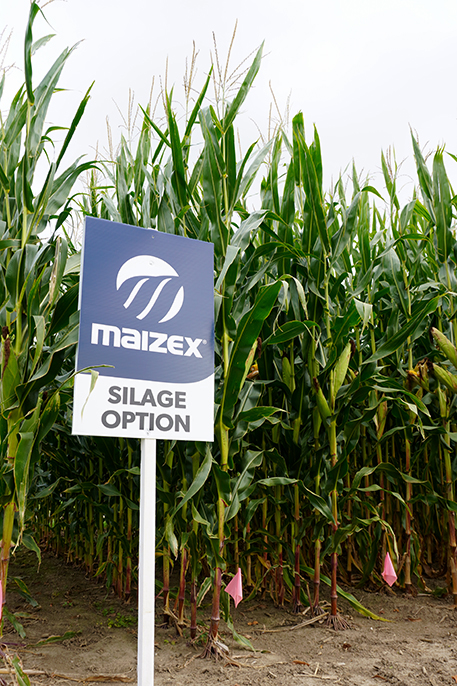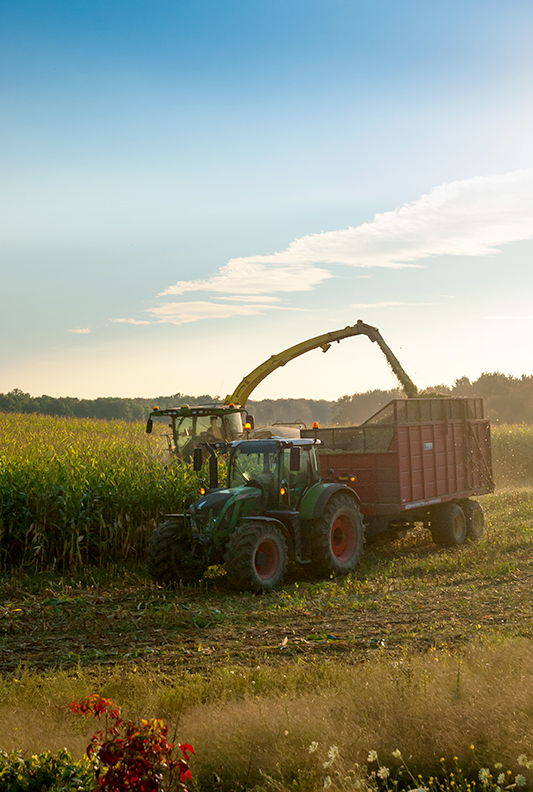Selecting Silage Hybrids for Your Farm
April 30, 2024 | Category: Uncategorized |Selecting the right corn hybrids for your farm is one of the most important factors in achieving a successful crop. There are many things to consider when selecting your silage hybrids to make sure they align with your production system and desired goals. We strongly suggest you consult with your nutritionist to identify your ration and production goals and pick the type of silage corn that best fits your operation.
Selecting Your Type of Silage Corn
There are two main types of silage corn that farmers grow, and each has different attributes to consider.
Dual-Purpose Hybrids
These are hybrids that have been developed for grain production but also make very suitable silage options. These are generally high yielding, tall, and robust hybrids that provide high tonnage and high-energy-content feed. They also provide flexibility for swing acres and changing harvest plans in-season.
Management notes: dual-purpose hybrids are generally easiest to grow as they require less specific management and, if you end up in a surplus feed position, can be sold for grain. Planting populations can range from 32,000–38,000 plants per acre. For better digestibility, consider a lower population, while a higher population will give you greater tonnage. Standability will also be the best with a dual-purpose product. Consider applying a fungicide to your dual-purpose hybrids to increase yield, quality, and digestibility.

Silage-Specific Hybrids
These hybrids have been bred for high tonnage, slower drydown, and increased whole plant digestibility. They tend to have a higher leaf:grain ratio, less lignin in the stalk, and a softer kernel texture. These hybrids are best suited for silage, and combining them should be avoided due to poor grain quality and standability late in season.
Management notes: silage-specific hybrids need to be planted at a lower population range of 28,000–34,000 plants per acre. These large, robust plants will compensate at these lower populations, and thus standability is improved. If using, plant 80% of your silage acres to a silage-specific hybrid and 20% to a dual-purpose to allow for harvest flexibility in the fall. Silage-specific hybrids are not designed to be combined or left out late in season. Apply a fungicide to silage-specific hybrids to improve yield, plant health, and standability.
Selecting the Desired Traits
Every operation is different. Each farmer must consider in advance where they are going to position their silage corn. Some farms are able to rotate their crops around while others, due to logistics or limited land base, are forced to grow corn-on-corn. This gives you direction on what traits your corn will need to grow the best crop possible. If you are growing your silage on rotated ground, following alfalfa, soybeans, or wheat for example, this gives you the option of using all the available traits—or none at all. If you are forced to grow corn-on-corn, it is recommended that you use a rootworm-protected hybrid. More consecutive years of corn-on-corn generally means more risk from rootworm damage. Rootworm traits help protect the plant from insects and improve yield and standability. Because not all trait options are offered in certain genetics, this may limit a grower’s options when selecting for a certain hybrid.
Choosing the Correct Maturity of Silage Corn
The next thing to consider, once you have determined the type of silage hybrid and the desired traits that you need, is the maturity of the corn that you want to grow. Generally, the guideline is that you would select a hybrid that is 150–200 crop heat units (CHU) or 7–10 relative maturity days (RM) longer than the adapted grain corn for your area. An example would be that, if you grow a 2750 CHU/92 RM grain hybrid, you would select a silage hybrid that is approximately 2950 CHU/99 RM in maturity. We suggest this to try to maximize the growing season and accumulate as many tonnes per acre as possible.
Quick Reference Guide on Choosing a Silage Hybrid
| Tonnage: Silage Specific = Dual-Purpose > BMR | Energy Content: Dual-Purpose > BMR > Silage Specific |
| Digestibility: BMR > Silage Specific = Dual-Purpose | Flexibility of Harvest: Dual-Purpose > Silage Specific = BMR |

Selecting Silage Hybrids to Optimize Production on Your Farm
At Maizex Seeds, we have taken the initiative to test our hybrids in different management regimes to see how each individual hybrid responds. The different management strategy tests include responses to nitrogen, population, and VT foliar fungicides. In doing so, we assign a responsiveness index to our hybrids so that farmers can select hybrids that will best fit their operations. This way, if a farmer knows they like to push fertility and population and they use a fungicide, they can select a hybrid that has shown more responsiveness to those inputs. Or, if a farmer tends to be more conservative on inputs, they could choose a hybrid that is more stable under less intensive management. The terms ‘offensive’ and ‘defensive’ are often used to describe hybrids. The offensive hybrids will respond more to additional inputs, whereas a defensive hybrid would be more consistent under less management.
Summary
Now that you have evaluated your needs on your farm and considered the attributes of the different types of silage hybrids, talk to your local Maizex dealer for your specific needs. They will know the current products for your area and how to best manage them on your farm.
References
https://www.progressiveforage.com/forage-types/silage/comparing-corn-silage-hybrids
